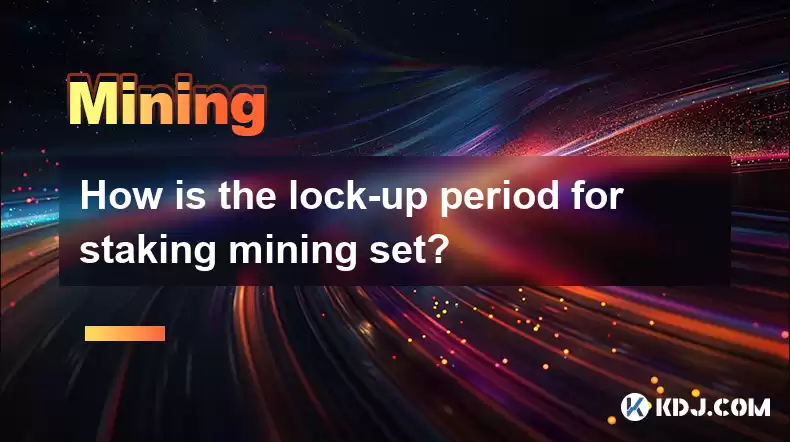-
 Bitcoin
Bitcoin $117600
2.11% -
 Ethereum
Ethereum $3907
6.13% -
 XRP
XRP $3.288
9.68% -
 Tether USDt
Tether USDt $1.000
-0.01% -
 BNB
BNB $784.8
2.00% -
 Solana
Solana $174.3
3.60% -
 USDC
USDC $0.9997
-0.03% -
 Dogecoin
Dogecoin $0.2220
8.04% -
 TRON
TRON $0.3379
0.01% -
 Cardano
Cardano $0.7829
5.46% -
 Stellar
Stellar $0.4348
8.84% -
 Hyperliquid
Hyperliquid $40.50
6.38% -
 Sui
Sui $3.757
7.22% -
 Chainlink
Chainlink $18.41
10.06% -
 Bitcoin Cash
Bitcoin Cash $581.6
1.91% -
 Hedera
Hedera $0.2586
5.37% -
 Avalanche
Avalanche $23.30
4.67% -
 Ethena USDe
Ethena USDe $1.001
0.01% -
 Litecoin
Litecoin $122.0
2.62% -
 UNUS SED LEO
UNUS SED LEO $8.972
-0.23% -
 Toncoin
Toncoin $3.338
1.14% -
 Shiba Inu
Shiba Inu $0.00001282
3.76% -
 Uniswap
Uniswap $10.38
6.88% -
 Polkadot
Polkadot $3.852
4.63% -
 Dai
Dai $1.000
0.02% -
 Bitget Token
Bitget Token $4.463
2.29% -
 Monero
Monero $263.6
-7.22% -
 Cronos
Cronos $0.1496
4.78% -
 Pepe
Pepe $0.00001106
4.91% -
 Aave
Aave $284.3
8.09%
How is the lock-up period for staking mining set?
Staking lock-up periods, varying by protocol, impact rewards and liquidity; longer periods often offer higher returns but less flexibility. Thorough research and understanding the specific terms are crucial before participation.
Mar 18, 2025 at 10:06 pm

Key Points:
- Lock-up periods are determined by the specific staking protocol and cryptocurrency. There's no universal standard.
- The length of the lock-up period impacts potential rewards and risk. Longer periods often yield higher returns but reduce liquidity.
- Several factors influence the setting of lock-up periods, including network security, inflation control, and the project's goals.
- Understanding the lock-up mechanism is crucial before participating in staking. Always review the terms and conditions carefully.
- Variations exist in lock-up structures, including flexible staking options with shorter or no lock-up periods.
How is the lock-up period for staking mining set?
The lock-up period in staking, often called a vesting period, isn't uniformly set across all cryptocurrencies. It's a crucial parameter determined by the specific blockchain protocol's design and the project team's goals. The length of this period directly impacts the rewards earned and the level of risk involved for the staker.
The primary factor influencing the duration is the desired level of network security. Longer lock-up periods incentivize long-term commitment from validators, strengthening the network's resistance to attacks. This is because validators with locked-up funds are less likely to act maliciously, as doing so would result in the loss of their staked assets.
Inflation control is another key consideration. Longer lock-up periods can help regulate inflation by reducing the rate at which new coins are released into circulation. By locking up a significant portion of the total supply, the supply available for trading is decreased, potentially influencing the token's value.
Project goals also play a significant role. Some projects might prioritize rapid growth and adoption, opting for shorter or even flexible lock-up periods to attract more participants. Others might focus on long-term stability and sustainability, favoring longer lock-up periods to ensure a more robust and secure network.
The process of setting the lock-up period involves technical considerations and economic modeling. The project team typically analyzes various factors to determine the optimal balance between incentivizing participation and maintaining network security and stability. This often involves sophisticated simulations and risk assessments.
Understanding the Lock-up Mechanism
Understanding how the lock-up period functions is essential before engaging in staking. The mechanism usually involves locking your cryptocurrency in a designated wallet or smart contract for the specified duration. During this period, your funds are unavailable for trading or other transactions. However, you still accrue staking rewards.
- Locking the funds: The process typically involves sending your crypto to a designated staking address or interacting with a smart contract.
- Accruing rewards: While your funds are locked, you'll receive staking rewards based on the protocol's rules and your contribution. Rewards are usually paid periodically.
- Unlocking the funds: After the lock-up period expires, you can usually access your initial stake and accumulated rewards. However, some protocols may have additional withdrawal processes.
Variations in Lock-up Structures
While many staking protocols utilize fixed lock-up periods, others offer more flexible options. Some platforms allow for flexible staking, enabling users to withdraw their stake at any time without penalty, although the rewards earned may be lower. This offers greater liquidity at the cost of potentially lower returns.
Impact of Lock-up Period Length on Rewards
Generally, longer lock-up periods are associated with higher staking rewards. This is because longer commitments demonstrate greater confidence in the project and contribute to the network's stability. The increased reward acts as an incentive for long-term participation. However, this needs to be weighed against the opportunity cost of having your funds locked up.
Risks Associated with Lock-up Periods
The main risk associated with lock-up periods is the loss of liquidity. If the cryptocurrency's price drops significantly during the lock-up period, you won't be able to sell your stake to mitigate losses. Furthermore, the risk of smart contract vulnerabilities or project failure exists. Thorough research and due diligence are crucial before engaging in staking.
Common Questions:
Q: What happens if I withdraw my stake before the lock-up period ends?
A: The consequences vary depending on the specific protocol. Some protocols impose penalties, such as a reduction in rewards or a complete forfeiture of rewards. Others might allow withdrawals but with a significant delay. Always check the terms and conditions of the specific staking program.
Q: Can I stake multiple cryptocurrencies simultaneously with different lock-up periods?
A: Yes, you can typically stake multiple cryptocurrencies simultaneously, each with its own lock-up period. However, this requires managing multiple wallets or accounts and tracking the various lock-up schedules.
Q: How are staking rewards calculated during the lock-up period?
A: The calculation method depends on the specific protocol. It usually involves factors like the total amount staked, the network's overall activity, and the protocol's reward distribution mechanism. Details are typically available in the project's documentation.
Q: What if the staking platform or project fails during the lock-up period?
A: This is a significant risk. If the platform or project fails, you could potentially lose your staked funds. Choosing reputable and established platforms, conducting thorough research, and diversifying your investments can help mitigate this risk.
Q: Are there any tax implications for staking rewards earned during the lock-up period?
A: Yes, staking rewards are generally considered taxable income in most jurisdictions. The specific tax treatment varies depending on your location and local tax laws. It's crucial to consult a tax professional to understand your tax obligations.
Disclaimer:info@kdj.com
The information provided is not trading advice. kdj.com does not assume any responsibility for any investments made based on the information provided in this article. Cryptocurrencies are highly volatile and it is highly recommended that you invest with caution after thorough research!
If you believe that the content used on this website infringes your copyright, please contact us immediately (info@kdj.com) and we will delete it promptly.
- EigenLayer, Restaking, and Ethereum: Navigating the Hype and the Hazards
- 2025-08-08 06:30:12
- Super Bowl 59: Jon Batiste to Jazz Up the National Anthem
- 2025-08-08 06:30:12
- Cold Wallet Crypto in 2025: The Future is Now, Ya'll
- 2025-08-08 05:10:13
- MAGACOIN, SOL, and ADA: A Tale of Shifting Tides in Crypto
- 2025-08-08 05:10:13
- SHIB Price, PEPE, and the Memecoin Supercycle: Who Will Reign Supreme?
- 2025-08-08 05:50:12
- Pudgy Penguins Price Prediction: Google Trends & Breakout Signals
- 2025-08-08 05:50:12
Related knowledge

What is "proof-of-work" and how does it relate to mining?
Aug 07,2025 at 02:03pm
Understanding the Concept of Proof-of-WorkProof-of-work (PoW) is a consensus mechanism used in blockchain networks to validate transactions and secure...

What are the differences between mining on Windows vs. Linux?
Aug 06,2025 at 11:29pm
Overview of Cryptocurrency Mining PlatformsCryptocurrency mining involves using computational power to solve complex cryptographic puzzles and validat...

How to use an old computer for cryptocurrency mining?
Aug 07,2025 at 12:42pm
Understanding the Feasibility of Using an Old Computer for MiningUsing an old computer for cryptocurrency mining may seem outdated, but it is still te...

Can you mine cryptocurrency using solar power?
Aug 07,2025 at 12:00am
Understanding the Basics of Cryptocurrency MiningCryptocurrency mining involves validating transactions on a blockchain network by solving complex cry...

How to build a mining rig inside a PC case?
Aug 06,2025 at 11:01pm
Understanding the Basics of a Mining Rig in a PC CaseBuilding a mining rig inside a PC case involves transforming a standard computer chassis into a d...

What are the best cryptocurrencies to mine with an ASIC?
Aug 08,2025 at 01:22am
Understanding ASIC Mining and Its Role in CryptocurrencyASIC stands for Application-Specific Integrated Circuit, a specialized hardware designed to pe...

What is "proof-of-work" and how does it relate to mining?
Aug 07,2025 at 02:03pm
Understanding the Concept of Proof-of-WorkProof-of-work (PoW) is a consensus mechanism used in blockchain networks to validate transactions and secure...

What are the differences between mining on Windows vs. Linux?
Aug 06,2025 at 11:29pm
Overview of Cryptocurrency Mining PlatformsCryptocurrency mining involves using computational power to solve complex cryptographic puzzles and validat...

How to use an old computer for cryptocurrency mining?
Aug 07,2025 at 12:42pm
Understanding the Feasibility of Using an Old Computer for MiningUsing an old computer for cryptocurrency mining may seem outdated, but it is still te...

Can you mine cryptocurrency using solar power?
Aug 07,2025 at 12:00am
Understanding the Basics of Cryptocurrency MiningCryptocurrency mining involves validating transactions on a blockchain network by solving complex cry...

How to build a mining rig inside a PC case?
Aug 06,2025 at 11:01pm
Understanding the Basics of a Mining Rig in a PC CaseBuilding a mining rig inside a PC case involves transforming a standard computer chassis into a d...

What are the best cryptocurrencies to mine with an ASIC?
Aug 08,2025 at 01:22am
Understanding ASIC Mining and Its Role in CryptocurrencyASIC stands for Application-Specific Integrated Circuit, a specialized hardware designed to pe...
See all articles

























































































